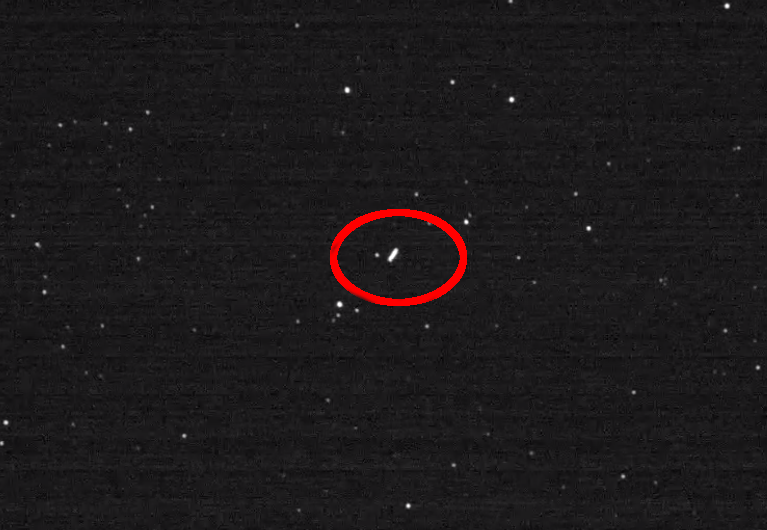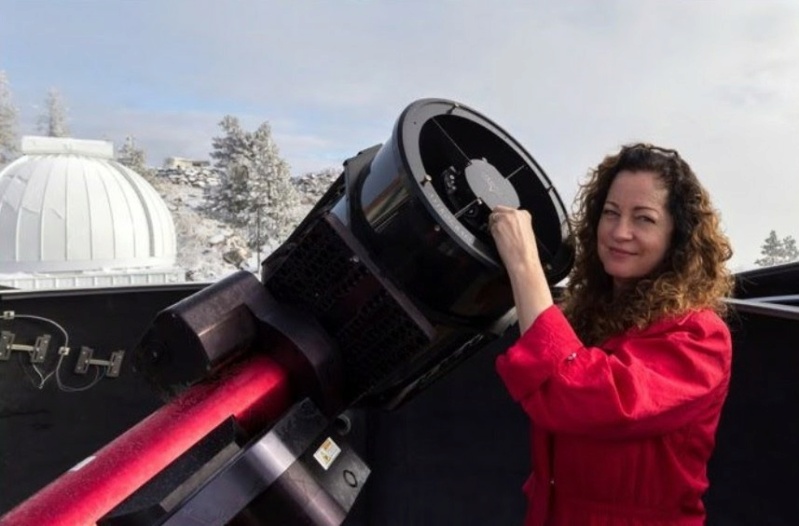Lucy - Préparation et mission orbitale
Le forum de la conquête spatiale :: Actualité spatiale :: Exploration du système solaire, et au delà ... :: Comètes, astéroïdes, planètes naines
Page 3 sur 4
Page 3 sur 4 •  1, 2, 3, 4
1, 2, 3, 4 
J'ai un petit peu de mal à lire le numéro de série sur la carlingue, mais ça reste de la haute précision :)
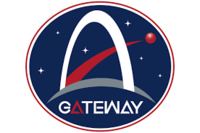
Fabien- Messages : 6767
Inscrit le : 23/09/2005
Age : 45
Localisation : Paris (75)
2 liens intéressants:
"Where is Lucy" lors des flyby terrestres ? https://whereislucy.space/EGA1.html
"Where is Lucy" en temps réel ? https://whereislucy.space
"Where is Lucy" lors des flyby terrestres ? https://whereislucy.space/EGA1.html
"Where is Lucy" en temps réel ? https://whereislucy.space
_________________
Blog sur le suivi du développement d'Orion
Une astronome canadienne 
 a capté le passage de Lucy lors de son flyby
a capté le passage de Lucy lors de son flyby

 a capté le passage de Lucy lors de son flyby
a capté le passage de Lucy lors de son flybyLUCY space craft fly by Taken by Debra Ceravolo on October 16, 2022 @ south Okanagan, BC, Canada a écrit:
https://spaceweathergallery.com/indiv_upload.php?upload_id=189333Caught the space craft LUCY when it emerged from the Earth's shadow. Unfortunately, missed the fade out. Used a Canon 6D with a Sigma Art 50mm lens at f/1.4, ISO 1600. 15 second photos with 2 second intervals stacked. Location southern Okanagan Valley, BC, Canada
Dernière édition par montmein69 le Lun 17 Oct 2022 - 21:02, édité 1 fois (Raison : Correction de genre)

montmein69- Donateur

- Messages : 20750
Inscrit le : 01/10/2005
Age : 73
Localisation : région lyonnaise
C'est corrigé

montmein69- Donateur

- Messages : 20750
Inscrit le : 01/10/2005
Age : 73
Localisation : région lyonnaise
La Terre et la Lune, vues par la sonde Lucy avec l'instrument T2CAM le 13 octobre 2022, d'une distance de 1,4 million de kilomètres :
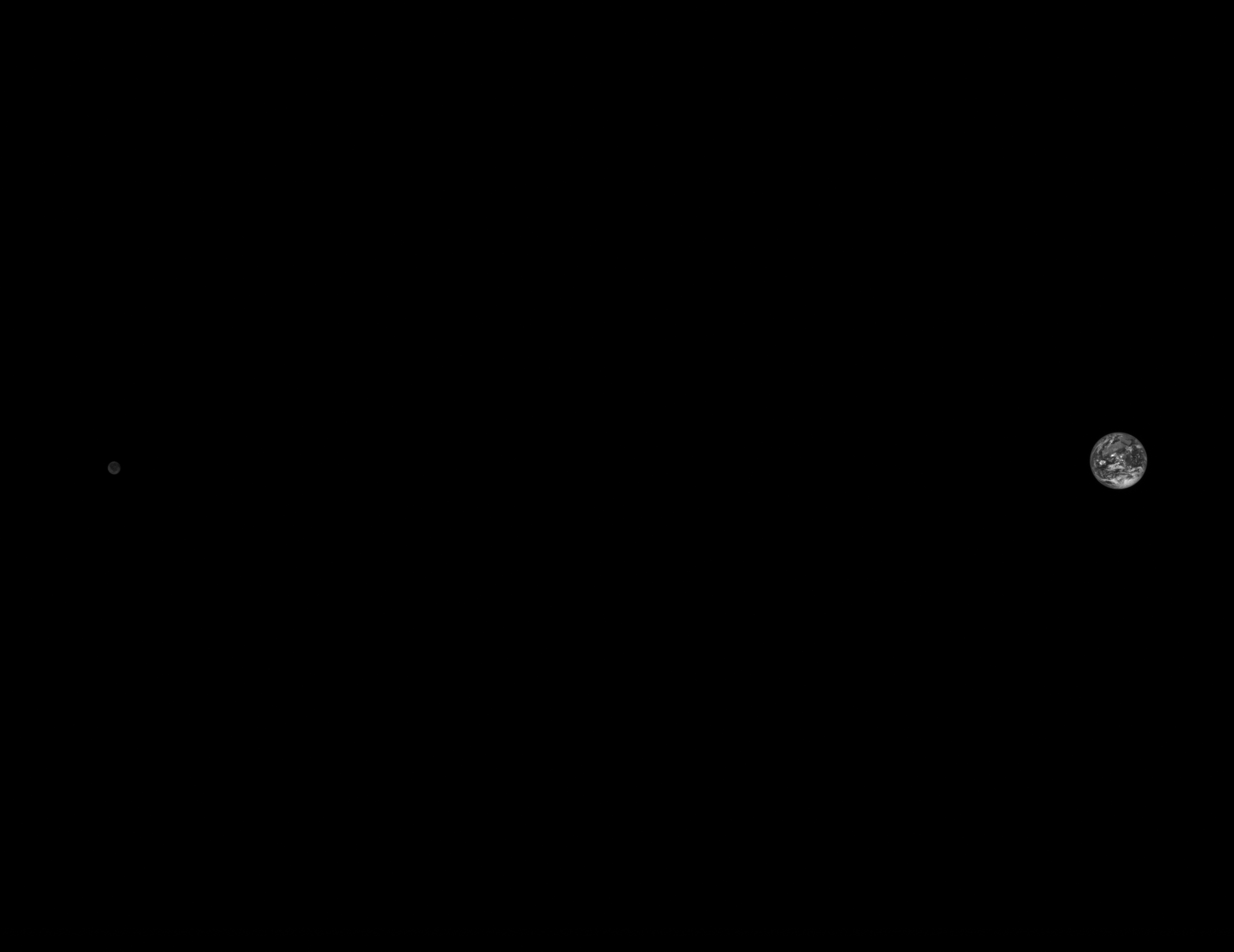
NASA/Goddard/SwRI
On October 13, 2022, NASA’s Lucy spacecraft captured this image of the Earth and the Moon from a distance of 890,000 miles (1.4 million km). The image was taken as part of an instrument calibration sequence as the spacecraft approached Earth for its first of three Earth gravity assists. These Earth flybys provide Lucy with the speed required to reach the Trojan asteroids — small bodies that orbit the Sun at the same distance as Jupiter. On its 12 year journey, Lucy will fly by a record breaking number of asteroids and survey their diversity, looking for clues to better understand the formation of the solar system.
The image was taken with Lucy’s Terminal Tracking Camera (T2CAM) system, a pair of identical cameras that are responsible for tracking the asteroids during Lucy’s high speed encounters. The T2CAM system was designed, built and tested by Malin Space Science Systems; Lockheed Martin Integrated the T2CAMs onto the Lucy spacecraft and operates them.

NASA/Goddard/SwRI
On October 13, 2022, NASA’s Lucy spacecraft captured this image of the Earth and the Moon from a distance of 890,000 miles (1.4 million km). The image was taken as part of an instrument calibration sequence as the spacecraft approached Earth for its first of three Earth gravity assists. These Earth flybys provide Lucy with the speed required to reach the Trojan asteroids — small bodies that orbit the Sun at the same distance as Jupiter. On its 12 year journey, Lucy will fly by a record breaking number of asteroids and survey their diversity, looking for clues to better understand the formation of the solar system.
The image was taken with Lucy’s Terminal Tracking Camera (T2CAM) system, a pair of identical cameras that are responsible for tracking the asteroids during Lucy’s high speed encounters. The T2CAM system was designed, built and tested by Malin Space Science Systems; Lockheed Martin Integrated the T2CAMs onto the Lucy spacecraft and operates them.

David L.- Modérateur

- Messages : 32265
Inscrit le : 16/08/2009
Age : 50
Localisation : Troisième planète
La Terre, vue par la sonde Lucy avec l'instrument T2CAM le 15 octobre 2022, d'une distance de 620 000 km :
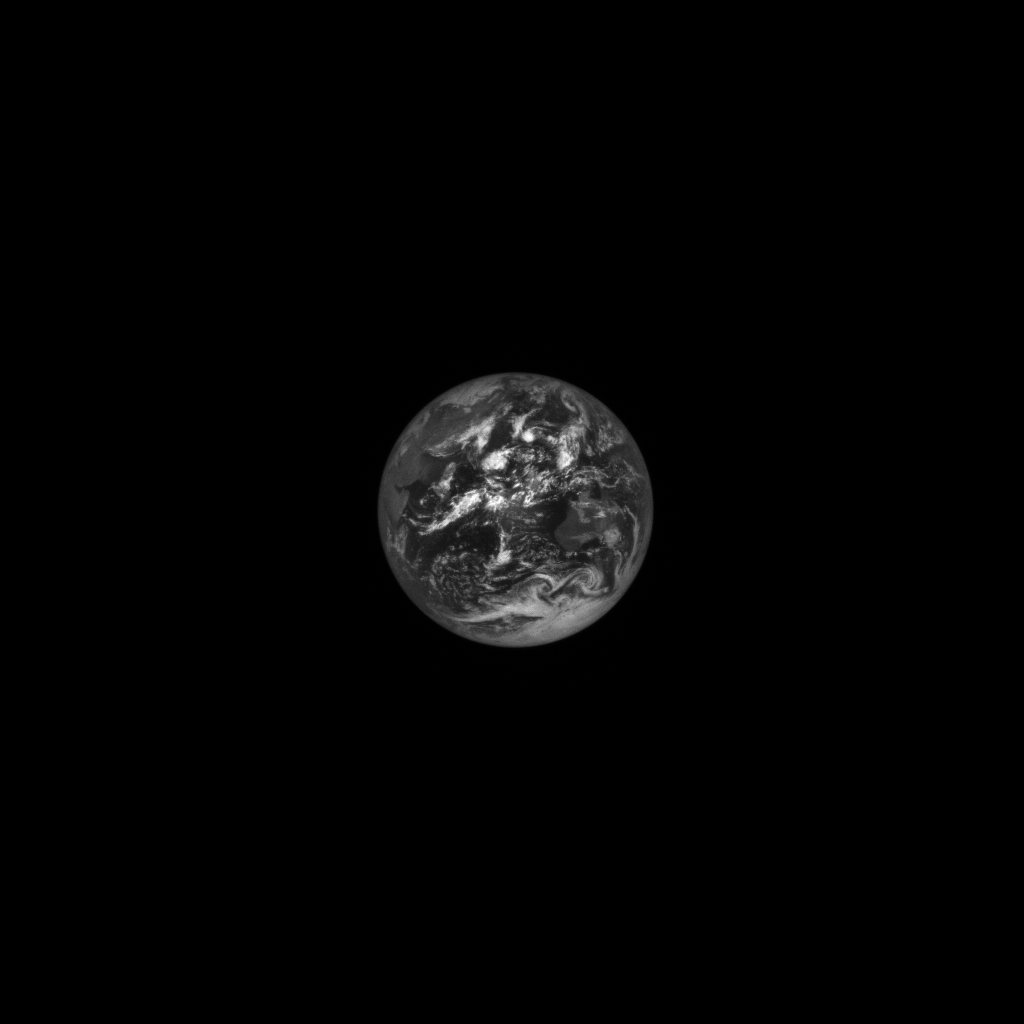
NASA/Goddard/SwRI
NASA’s Lucy spacecraft captured this image (which has been cropped) of the Earth on Oct 15, 2022, as a part of an instrument calibration sequence at a distance of 380,000 miles (620,000 km). The upper left of the image includes a view of Hadar, Ethiopia, home to the 3.2 million-year-old human ancestor fossil for which the spacecraft was named.
Lucy is the first mission to explore the Jupiter Trojan asteroids, an ancient population of asteroid “fossils” that orbit around the Sun at the same distance as Jupiter. To reach these distant asteroids, the Lucy spacecraft’s trajectory includes three Earth gravity assists to boost it on its journey to these enigmatic asteroids.
The image was taken with Lucy’s Terminal Tracking Camera (T2CAM) system, a pair of identical cameras that are responsible for tracking the asteroids during Lucy’s high-speed encounters. The T2CAM system was designed, built and tested by Malin Space Science Systems; Lockheed Martin Integrated the T2CAMs onto the Lucy spacecraft and operates them.

NASA/Goddard/SwRI
NASA’s Lucy spacecraft captured this image (which has been cropped) of the Earth on Oct 15, 2022, as a part of an instrument calibration sequence at a distance of 380,000 miles (620,000 km). The upper left of the image includes a view of Hadar, Ethiopia, home to the 3.2 million-year-old human ancestor fossil for which the spacecraft was named.
Lucy is the first mission to explore the Jupiter Trojan asteroids, an ancient population of asteroid “fossils” that orbit around the Sun at the same distance as Jupiter. To reach these distant asteroids, the Lucy spacecraft’s trajectory includes three Earth gravity assists to boost it on its journey to these enigmatic asteroids.
The image was taken with Lucy’s Terminal Tracking Camera (T2CAM) system, a pair of identical cameras that are responsible for tracking the asteroids during Lucy’s high-speed encounters. The T2CAM system was designed, built and tested by Malin Space Science Systems; Lockheed Martin Integrated the T2CAMs onto the Lucy spacecraft and operates them.

David L.- Modérateur

- Messages : 32265
Inscrit le : 16/08/2009
Age : 50
Localisation : Troisième planète
La Lune vue par la sonde Lucy, 8 heures après le survol de la Terre, d'une distance de 230 000 km, avec l'instrument L'LORRI (pose de 1 ms) :
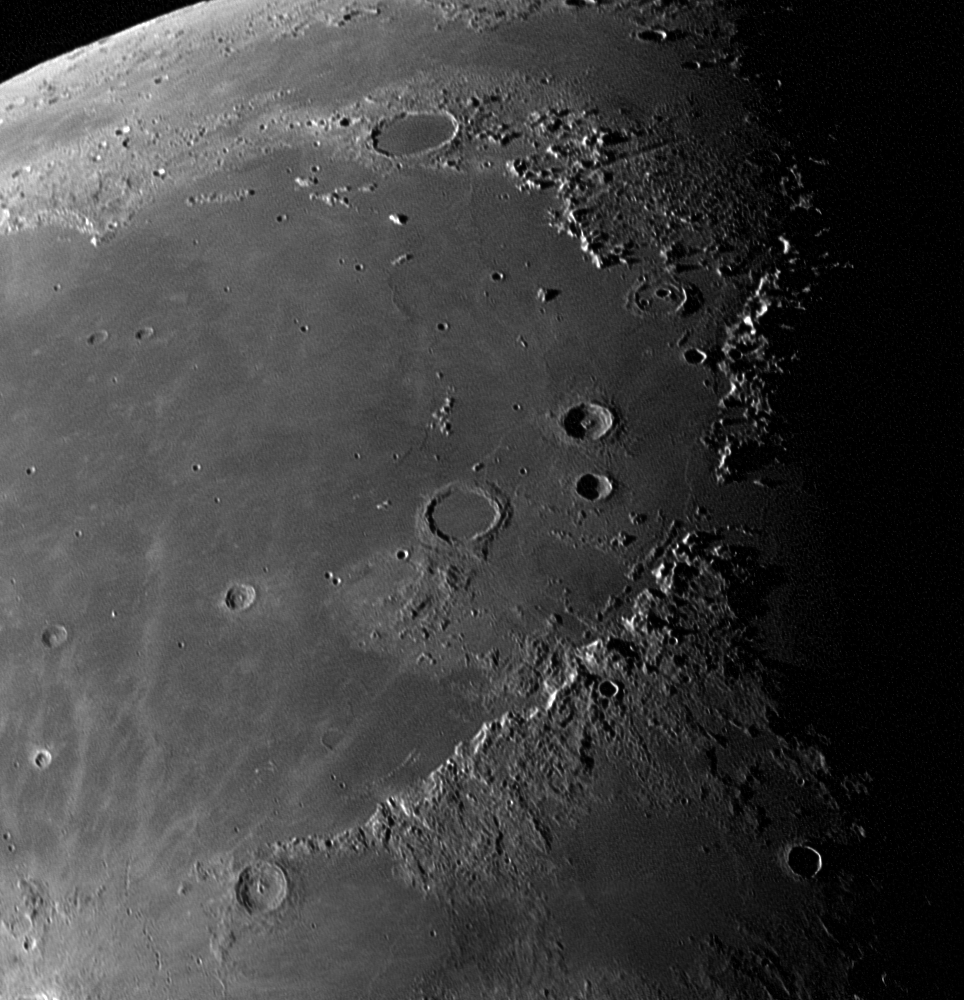
NASA/Goddard/SwRI/JHU-APL/Tod R. Lauer (NOIRLab)
NASA’s Lucy spacecraft captured this image of the Moon’s surface on Oct 16, 2022, about 8 hours after it flew by the Earth for its first of three gravity assists. The image was taken while Lucy was between the Earth and the Moon, so it shows a perspective familiar to Earth-based observers. The image shows a roughly 600 mile (1000 km) wide swath of lunar terrain, dominated by the ancient, lava-filled impact basin Mare Imbrium. The Apennine Mountains, part of the Imbrium basin rim, which were the landing site for the Apollo 15 mission in 1971, dominate the lower-right portion of the image. Lucy was approximately 140,000 miles (230,000 km) from the Moon when the image was taken.
The image, which is a single 1 millisecond exposure, has been sharpened. Each pixel represents approximately 0.7 miles (1.1 km).
This image was taken with L’LORRI (Lucy LOng Range Reconnaissance Imager), Lucy’s high resolution greyscale imager. L’LORRI was provided and operated by Johns Hopkins Applied Physics Laboratory.

NASA/Goddard/SwRI/JHU-APL/Tod R. Lauer (NOIRLab)
Single Frame of Mare Imbrium
NASA’s Lucy spacecraft captured this image of the Moon’s surface on Oct 16, 2022, about 8 hours after it flew by the Earth for its first of three gravity assists. The image was taken while Lucy was between the Earth and the Moon, so it shows a perspective familiar to Earth-based observers. The image shows a roughly 600 mile (1000 km) wide swath of lunar terrain, dominated by the ancient, lava-filled impact basin Mare Imbrium. The Apennine Mountains, part of the Imbrium basin rim, which were the landing site for the Apollo 15 mission in 1971, dominate the lower-right portion of the image. Lucy was approximately 140,000 miles (230,000 km) from the Moon when the image was taken.
The image, which is a single 1 millisecond exposure, has been sharpened. Each pixel represents approximately 0.7 miles (1.1 km).
This image was taken with L’LORRI (Lucy LOng Range Reconnaissance Imager), Lucy’s high resolution greyscale imager. L’LORRI was provided and operated by Johns Hopkins Applied Physics Laboratory.

David L.- Modérateur

- Messages : 32265
Inscrit le : 16/08/2009
Age : 50
Localisation : Troisième planète
Déployé à 98%, le panneau solaire récalcitrant restera en l'état, l'équipe en charge de la mission ayant décidé de suspendre de nouvelles activités de déploiement, estimant le risque acceptable et que de nouveaux essais ne seraint probablement pas bénéfiques
_________________
Blog sur le suivi du développement d'Orion
Tant que ce panneau reçoit quand même largement d'énergie solaire pour faire fonctionner la sonde, je pense qu'il n'y a plus de quoi s'inquiéter, mais surveiller qu'il ne se replie pas non plus, ne pouvant désormais plus être fixé...
Un 10e astéroïde a été ajouté au programme de la sonde Lucy : 1999 VD57
https://twitter.com/tony873004/status/1618342208633208832
https://twitter.com/tony873004/status/1618342208633208832

David L.- Modérateur

- Messages : 32265
Inscrit le : 16/08/2009
Age : 50
Localisation : Troisième planète
Le survol de 1999 VD57 est prévu le 1er novembre 2023.
https://www.nasa.gov/feature/goddard/2023/nasa-s-lucy-team-announces-new-asteroid-target
https://www.nasa.gov/feature/goddard/2023/nasa-s-lucy-team-announces-new-asteroid-target

David L.- Modérateur

- Messages : 32265
Inscrit le : 16/08/2009
Age : 50
Localisation : Troisième planète
Une étape importante que ce fly-by et son "apprentissage" après petite correction de sa trajectoire si elle s'écartait un peu de "l'optimale", et un moyen de mieux orienter les caméras pour imager l'astéroïde, chapeau! vu la vitesse de déplacement de la sonde et celle de l'objet, car les petits écarts peuvent assez rapidement se traduire par de gros effets.
Google translator si nécessaire : https://translate.google.fr/?hl=fr
Si les résultats des observations par les instruments sont directement traités puis qu'une action corrective est réalisée automatiquement**, c'est une sorte d'auto-apprentissage à haute vitesse, non ?
** je ne sais pas si c'est le cas.
* Dinkinesh (1999 VD57)https://www.nasa.gov/solar-system/nasas-lucy-team-announces-new-asteroid-target/ a écrit:The Lucy team realized that, by adding a small maneuver, the spacecraft would be able to get an even closer look at this asteroid. So, on Jan. 24, the team officially added it* to Lucy’s tour as an engineering test of the spacecraft’s pioneering terminal tracking system. This new system solves a long-standing problem for flyby missions: during a spacecraft’s approach to an asteroid, it is quite difficult to determine exactly how far the spacecraft is from the asteroid, and exactly which way to point the cameras.
“In the past, most flyby missions have accounted for this uncertainty by taking a lot of images of the region where the asteroid might be, meaning low efficiency and lots of images of blank space,” said Hal Levison, Lucy principal investigator from the Southwest Research Institute Boulder, Colorado office. “Lucy will be the first flyby mission to employ this innovative and complex system to automatically track the asteroid during the encounter. This novel system will allow the team to take many more images of the target.”
Google translator si nécessaire : https://translate.google.fr/?hl=fr
Si les résultats des observations par les instruments sont directement traités puis qu'une action corrective est réalisée automatiquement**, c'est une sorte d'auto-apprentissage à haute vitesse, non ?
** je ne sais pas si c'est le cas.

montmein69- Donateur

- Messages : 20750
Inscrit le : 01/10/2005
Age : 73
Localisation : région lyonnaise
David L. a écrit:Le survol de 1999 VD57 est prévu le 1er novembre 2023.
https://www.nasa.gov/feature/goddard/2023/nasa-s-lucy-team-announces-new-asteroid-target
La distance minimale entre Lucy et l'astéroïde Dinkinesh sera de 425 km à 16h54 GMT, avec une vitesse relative de 4,5 km/s.
Dernière édition par David L. le Mer 1 Nov 2023 - 18:04, édité 1 fois

David L.- Modérateur

- Messages : 32265
Inscrit le : 16/08/2009
Age : 50
Localisation : Troisième planète
Le changement d'orientation de Lucy pendant le survol de l'astéroïde Dinkinesh :
https://twitter.com/LucyMission/status/1719724658713403553
https://twitter.com/LucyMission/status/1719724658713403553

David L.- Modérateur

- Messages : 32265
Inscrit le : 16/08/2009
Age : 50
Localisation : Troisième planète
La rencontre s'est bien passée. La sonde a de nouveau communiqué avec la Terre ensuite et commence le téléchargement des données et des images.
https://blogs.nasa.gov/lucy/2023/11/01/nasas-lucy-spacecraft-completes-asteroid-flyby/
https://blogs.nasa.gov/lucy/2023/11/01/nasas-lucy-spacecraft-completes-asteroid-flyby/

fredB- Messages : 2114
Inscrit le : 02/09/2007
Age : 57
Localisation : Toulouse
Une semaine de téléchargement pour récupérer les données de la sonde.fredB a écrit:La rencontre s'est bien passée. La sonde a de nouveau communiqué avec la Terre ensuite et commence le téléchargement des données et des images.
https://blogs.nasa.gov/lucy/2023/11/01/nasas-lucy-spacecraft-completes-asteroid-flyby/
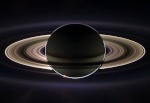
Aramis- Donateur

- Messages : 398
Inscrit le : 02/04/2007
Age : 74 Localisation : Europe
La faible distance entre Dinkinesh et sa lune est ce qui me surprend le plus.
Dinkinesh a environ 1 km de diamètre, et sa lune, à peu près 150 mètres de diamètre, pour autant que je puisse en juger. Entre ces deux astéroïdes, la distance n'est que de quelques centaines de mètres, pour autant que l'on puisse se fier aux apparences que donnent les photos.
Il me semble que pour la première fois, nous observons un système où il serait possible, par la seule force de ses muscles, de passer de l'astre central à la lune, et encore plus facilement, de la lune à l'astre central.
Peut-être ce type de performance sera-t-il à la mode pour les astronautes les plus intrépides dans quelques décennies. Mais évidemment, le risque sera grand de ne pas partir dans la bonne direction en faisant l'apprentissage de ce nouveau sport, et de se perdre dans l'espace. Il faudra donc être appuyé par un vaisseau, automatique ou habité, qui pourra se rapprocher des malheureux ayant manqué leur cible pour assurer leur sauvetage.
Dinkinesh a environ 1 km de diamètre, et sa lune, à peu près 150 mètres de diamètre, pour autant que je puisse en juger. Entre ces deux astéroïdes, la distance n'est que de quelques centaines de mètres, pour autant que l'on puisse se fier aux apparences que donnent les photos.
Il me semble que pour la première fois, nous observons un système où il serait possible, par la seule force de ses muscles, de passer de l'astre central à la lune, et encore plus facilement, de la lune à l'astre central.
Peut-être ce type de performance sera-t-il à la mode pour les astronautes les plus intrépides dans quelques décennies. Mais évidemment, le risque sera grand de ne pas partir dans la bonne direction en faisant l'apprentissage de ce nouveau sport, et de se perdre dans l'espace. Il faudra donc être appuyé par un vaisseau, automatique ou habité, qui pourra se rapprocher des malheureux ayant manqué leur cible pour assurer leur sauvetage.
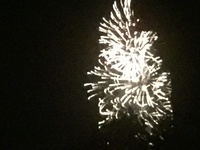
PierredeSedna- Donateur

- Messages : 2427
Inscrit le : 24/08/2017
Age : 65
Localisation : Région Ile-de-France
Surprise dans la surprise, le satellite de Dinkinesh est en fait un double corps !

Griffon- Messages : 1547
Inscrit le : 19/10/2012
Age : 45
Localisation : Paris
Page 3 sur 4 •  1, 2, 3, 4
1, 2, 3, 4 
 Sujets similaires
Sujets similaires» OSIRIS-REx - Mission orbitale
» OSIRIS-APEX - Mission orbitale vers Apophis
» Préparation de la mission Phoenix
» Préparation de la mission ExoMars 2016 (TGO + EDM)
» Préparation de la mission martienne InSight
» OSIRIS-APEX - Mission orbitale vers Apophis
» Préparation de la mission Phoenix
» Préparation de la mission ExoMars 2016 (TGO + EDM)
» Préparation de la mission martienne InSight
Le forum de la conquête spatiale :: Actualité spatiale :: Exploration du système solaire, et au delà ... :: Comètes, astéroïdes, planètes naines
Page 3 sur 4
Permission de ce forum:
Vous ne pouvez pas répondre aux sujets dans ce forum
 Portail
Portail
 Dim 16 Oct 2022 - 17:44
Dim 16 Oct 2022 - 17:44